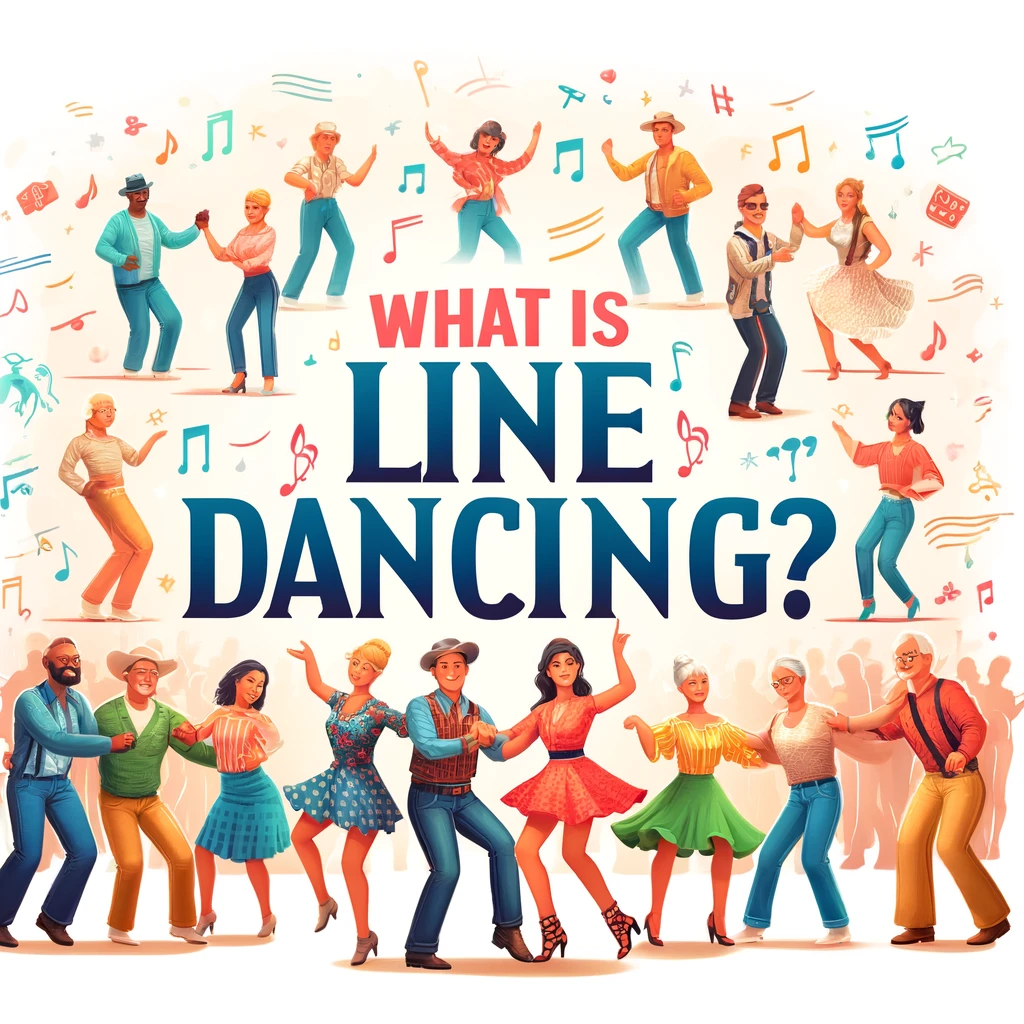What is Line Dancing?
June 2, 2024

So What is Line Dancing?
Line dancing is a choreographed dance form where a group of people perform a sequence of steps in unison, arranged in lines or rows. This style of dance doesn’t typically involve physical interaction between dancers, making it perfect for individuals without partners. The accessibility and community aspect of line dancing have contributed to its widespread popularity.
History of Line Dancing
Line dancing has roots in folk dancing and contra dancing, with significant influence from various cultural traditions. It gained prominence in the 1980s, largely due to the popularity of country music. However, its history is richer and more diverse, with elements of European, African, and Native American dance traditions.
Line Dance Format
The structure of a line dance is defined by its “counts,” which correspond to musical beats. Basic line dances often focus on simple footwork, but more advanced dances may incorporate intricate arm movements and spins. The consistency of steps allows dancers to quickly learn and participate, regardless of their prior experience.
Popular Line Dances
Several line dances have achieved iconic status, transcending the boundaries of country music. For example, the “Electric Slide,” “Cha-Cha Slide,” and “Cupid Shuffle” are popular at various social gatherings and celebrations. These dances often feature catchy tunes and repetitive steps, making them easy to learn and enjoyable to perform.
Line Dancing Today
Line dancing is a global phenomenon, practiced in various settings, from dance bars and clubs to community centers and social events. Its appeal lies in its simplicity and the sense of community it fosters. Today, line dancing incorporates a wide range of musical genres, including pop, rock, hip-hop, and Latin, reflecting its evolving nature and broad appeal.
Health Benefits of Line Dancing
Physical Health
- Cardiovascular Fitness: The rhythmic and continuous movement in line dancing boosts heart health and stamina.
- Muscle Toning: Regular line dancing helps tone various muscle groups, especially in the legs and core.
- Balance and Coordination: The coordinated steps improve balance and spatial awareness.
Mental Health
- Stress Relief: Dancing releases endorphins, reducing stress and promoting a sense of well-being.
- Cognitive Function: Learning and remembering dance steps enhance memory and cognitive function.
Social Interaction
- Community Building: Line dancing provides a fun and inclusive environment, fostering social bonds and friendships.
- Accessibility: Its straightforward format makes it accessible to people of all ages and skill levels.
Getting Started with Line Dancing
If you’re new to line dancing, there are several ways to get started:
- Classes: Many community centers, gyms, and dance studios offer line dancing classes for beginners.
- Online Tutorials: Numerous online resources, including videos and step-by-step guides, can help you learn at your own pace.
- Local Events: Check for local social events, clubs, or festivals that feature line dancing.
Conclusion
Line dancing is more than just a fun activity; it’s a form of exercise, a social event, and a cultural expression. Its simplicity and adaptability make it a perfect choice for anyone looking to enjoy music and movement, meet new people, and stay active. Whether you’re at a wedding, a country bar, or a community center, line dancing offers a joyful and inclusive experience for all.
